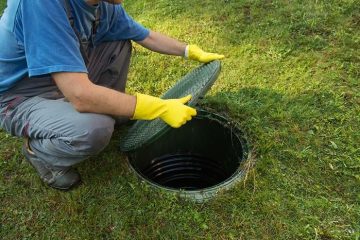As the healthcare landscape evolves, the need for accessible medical equipment becomes increasingly crucial, especially for patients requiring long-term care, post-operative recovery, or managing chronic conditions at home. Renting hospital beds and other medical equipment offers a viable and cost-effective solution, ensuring patients receive the necessary care in the comfort of their own homes.
Medical equipment rentals provide flexibility, allowing patients to upgrade or change equipment as their needs change. This option also ensures that patients have access to the latest technology without the high upfront costs, making it a practical and economical choice for many.
This guide provides a detailed overview of the rental process, covering everything from understanding different types of equipment to choosing the right rental provider.
Why Rent Hospital Beds and Medical Equipment?
- Cost Efficiency: Purchasing medical equipment can be prohibitively expensive, particularly if the need is temporary. Renting reduces the financial burden, allowing patients and healthcare facilities to allocate resources more effectively.
- Flexibility: Rental agreements offer flexibility to change or upgrade equipment as the patient’s needs evolve without the commitment of ownership.
- Maintenance and Upgrades: Rental companies typically handle maintenance, repairs, and updates, ensuring that equipment functions optimally without additional costs.
- Space and Management: Renting equipment temporarily can help manage space in homes or facilities better, as items can be returned when no longer needed.
Understanding the Different Types of Hospital Beds and Medical Equipment Available for Rent
Hospital Beds
- Standard Hospital Beds: Adjustable beds designed for general patient care in hospitals or homes.
- Specialty Beds: Includes bariatric beds, pediatric beds, and beds designed for intensive care, offering features like pressure relief and programmable positions.
Mobility Aids
- Wheelchairs: Manual and electric wheelchairs to accommodate different mobility needs.
- Walkers and Rollators: Support for patients who can walk but need stability assistance.
Respiratory Equipment
- Oxygen Concentrators: Devices that concentrate oxygen from ambient air to deliver it to patients requiring respiratory support.
- CPAP/BiPAP Machines: Used by patients with sleep apnea to maintain positive airway pressure and assist breathing.
Other Medical Supplies
- Patient Lifts: Assist caregivers in transferring patients between beds, chairs, and other areas.
- Monitoring Devices: Includes blood pressure monitors, pulse oximeters, and electrocardiographs.
The Rental Process: Step-by-Step Guide
Step 1: Assess Patient Needs
Consult healthcare providers to determine the specific type and specifications of equipment required based on the patient’s medical condition.
Step 2: Research Rental Providers
Look for providers that offer a wide range of high-quality, well-maintained equipment. Consider their reputation, customer reviews, and compliance with healthcare standards.
Step 3: Evaluate Rental Terms
- Duration: Determine the rental period based on recovery or care requirements.
- Cost: Understand all costs involved, including deposits, monthly rental fees, delivery, and potential extra charges.
- Service and Maintenance: Ensure the provider offers comprehensive service agreements and quick response for maintenance.
Step 4: Arrange for Delivery and Installation
Coordinate the delivery and professional installation of the equipment. Verify that the installation team offers a demonstration on how to safely use and maintain the equipment.
Step 5: Training on Equipment Use
Ensure that all caregivers, whether professional or family members, receive adequate training on the operation of the equipment to prevent accidents and ensure effective treatment.
Step 6: Monitor and Adapt Equipment Needs
Regularly assess the equipment’s effectiveness and comfort for the patient. Be prepared to adapt the equipment as treatment progresses or in response to the patient’s changing needs.
Case Studies
Case Study 1: Short-term Postoperative Care
Patient: An elderly patient recovering from hip replacement surgery needed a hospital bed, a wheelchair, and a walker for 3 months.
Solution: The family rented the necessary equipment from a local provider known for reliable service and quality equipment. The rental included installation, a demonstration of safe usage, and a flexible term that could be extended if recovery took longer than expected.
Case Center 2: Long-term Care
Patient: A patient with advanced ALS required a fully adjustable medical bed, a patient lift, and a respirator on a long-term basis.
Solution: The equipment was rented with a long-term contract that included regular maintenance checks, equipment replacements, and upgrades as the patient’s condition changed, ensuring comfort and the best possible care.
Environmental Impact and Sustainability
Reducing Waste
Rental services contribute to environmental sustainability by maximizing the use of medical equipment. Instead of disposing of equipment after short-term use, renting allows multiple users to utilize the same equipment over its lifecycle, significantly reducing waste and promoting recycling of resources.
Energy Efficiency
Choosing energy-efficient models when renting medical equipment can also reduce the environmental footprint. Renters should consider equipment that uses modern, energy-saving technologies that not only help the environment but can also reduce electricity costs associated with long-term usage.
Conclusion
Renting hospital beds and medical equipment is a practical option that offers flexibility, cost efficiency, and access to necessary medical care with less financial burden. By carefully assessing needs, selecting the right equipment and provider, and ensuring thorough training and adaptable rental terms, patients can receive optimal care in a supportive home environment. As demand grows for home healthcare solutions, understanding the nuances of equipment rental will become increasingly important for patients, families, and healthcare providers alike.



